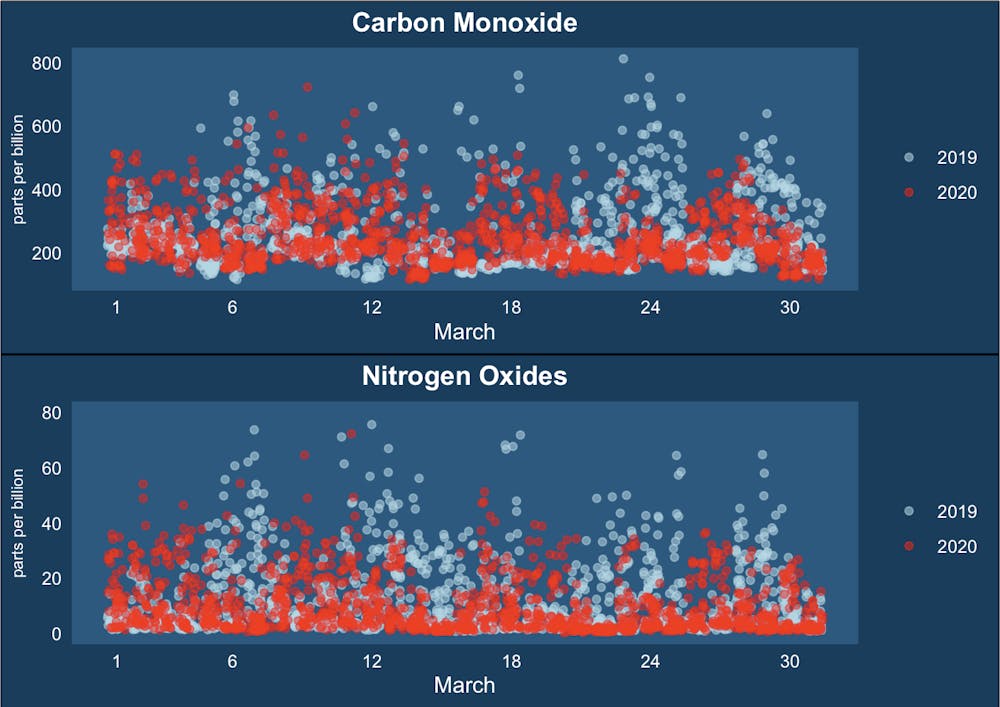With much of the country under stay-at-home orders, carbon emissions in some of America’s largest cities have been slashed in half. But despite near-empty roads, the Triangle area hasn't seen a significant drop in pollution just yet.
“The statewide stay-at-home order has not been in place long enough for impacts to be reflected in the air monitoring data,” said Zaynab Nasif, a spokesperson for the N.C. Department of Environmental Quality.
DEQ's Division of Air Quality records hourly levels of carbon monoxide and nitrogen dioxide — two pollutants closely tied to emissions — at sites along Interstate 40 and across Raleigh.

But William Vizuete, associate professor in the Gillings School of Public Health, said North Carolinians will experience health benefits from social distancing regardless.
He said most Americans experience their largest exposure to air pollution while sitting in their cars.
“When you're sitting in traffic on I-40 or behind a tailpipe, that glass doesn't protect you," he said. "You’re breathing in all those fumes and particles as you drive down the highway."
UNC economics professor Andrew Yates said a temporary reduction in air pollution, however brief, will likely help reduce acute health impacts like shortness of breath, and there’s no question reduced air pollution leads to a decrease in mortality.
“You’re definitely going to see some benefits from less air pollution," he said. "My gut feeling is it's not going to be as much as the deaths, of course, from coronavirus."



